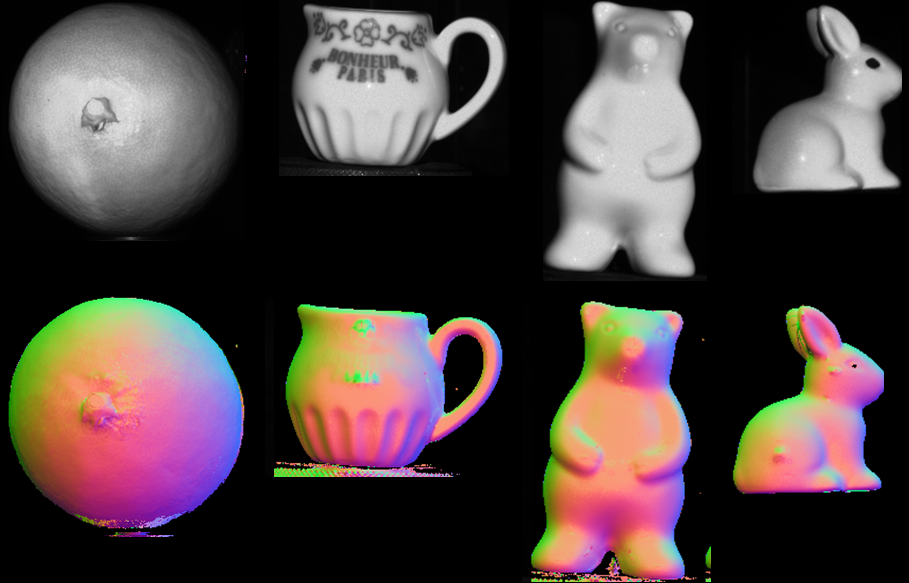
We introduce a method to recover the shape of a smooth dielectric object from polarization images taken with a light source from different directions. We present two constraints on shading and polarization and use both in a single optimization scheme. This integration is motivated by the fact that photometric stereo and polarization-based methods have complementary abilities. The polarization-based method can give strong cues for the surface orientation and refractive index, which are independent of the light direction. However, it has ambiguities in selecting between two ambiguous choices of the surface orientation, in the relationship between refractive index and zenith angle (observing angle), and limited performance for surface points with small zenith angles, where the polarization effect is weak. In contrast, photometric stereo method with multiple light sources can disambiguate the surface orientation and give a strong relationship between the surface normals and light directions. However, it has limited performance for large zenith angles, refractive index estimation, and faces the ambiguity in case the light direction is unknown. Taking their advantages, our proposed method can recover the surface normals for both small and large zenith angles, the light directions, and the refractive indexes of the object.


Polarizer angles (degrees): 0, -18, -36, -54, -72, -90, -108, -126, -144, -162
Light sources The same light source moves to 8 locations with the same distance to the target object. Therefore, light source intensity calibration is not necessary.
Object folder structure:
 LightDirection1
LightDirection1 LightDirection2
LightDirection2 ...
... LightDirection8
LightDirection8- GroundtruthShape.ply
Polarizer angles (degrees): 0, 45, 90, 135
Light sources: 8 light sources are used and light source intensity calibration is necessary, the light source intensity is found in Intensity.txt
Object folder structure:
 1
1 2
2 ...
... 8
8- GroundtruthShape.ply
@inproceedings{Ngo2015,
author = {Trung Thanh Ngo and Hajime Nagahara and Rin-ichiro Taniguchi},
booktitle = {IEEE Conference on Computer Vision and Pattern Recognition (CVPR)},
issn = {1063-6919},
month = {June},
pages = {2310-2318},
title = {Shape and light directions from shading and polarization},
year = {2015},
}
@ARTICLE{Ngo2021,
author={Trung Thanh Ngo and Hajime Nagahara and Rin-ichiro Taniguchi},
journal={IEEE Transactions on Pattern Analysis and Machine Intelligence},
title={Surface Normals and Light Directions from Shading and Polarization},
year={2021},
volume={},
number={},
pages={1-1},
doi={10.1109/TPAMI.2021.3072656}}